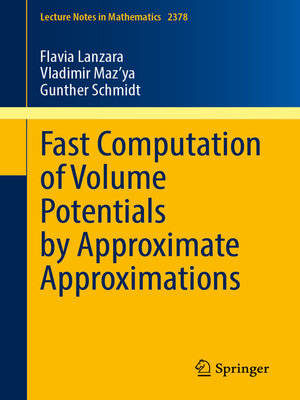Fast Computation of Volume Potentials by Approximate Approximations
ebook ∣ Lecture Notes in Mathematics
By Flavia Lanzara

Sign up to save your library
With an OverDrive account, you can save your favorite libraries for at-a-glance information about availability. Find out more about OverDrive accounts.
Find this title in Libby, the library reading app by OverDrive.



Search for a digital library with this title
Title found at these libraries:
| Library Name | Distance |
|---|---|
| Loading... |
This book introduces a new fast high-order method for approximating volume potentials and other integral operators with singular kernel. These operators arise naturally in many fields, including physics, chemistry, biology, and financial mathematics. A major impediment to solving real world problems is the so-called curse of dimensionality, where the cubature of these operators requires a computational complexity that grows exponentially in the physical dimension. The development of separated representations has overcome this curse, enabling the treatment of higher-dimensional numerical problems. The method of approximate approximations discussed here provides high-order semi-analytic cubature formulas for many important integral operators of mathematical physics. By using products of Gaussians and special polynomials as basis functions, the action of the integral operators can be written as one-dimensional integrals with a separable integrand. The approximation of a separated representation of the density combined with a suitable quadrature of the one-dimensional integrals leads to a separated approximation of the integral operator. This method is also effective in high-dimensional cases. The book is intended for graduate students and researchers interested in applied approximation theory and numerical methods for solving problems of mathematical physics.







